
Rashid Alievich Sunyaev is a German, Soviet, and Russian astrophysicist of Tatar descent. He got his MS degree from the Moscow Institute of Physics and Technology (MIPT) in 1966. He became a professor at MIPT in 1974. Sunyaev was the head of the High Energy Astrophysics Department of the Russian Academy of Sciences, and has been chief scientist of the Academy's Space Research Institute since 1992. He has also been a director of the Max Planck Institute for Astrophysics in Garching, Germany since 1996, and Maureen and John Hendricks Distinguished Visiting Professor in the School of Natural Sciences at the Institute for Advanced Study in Princeton since 2010.
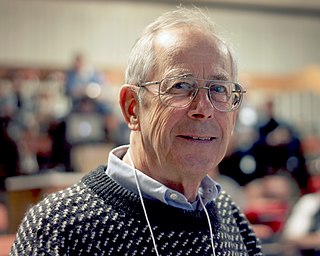
Phillip James Edwin Peebles is a Canadian-American astrophysicist, astronomer, and theoretical cosmologist who is currently the Albert Einstein Professor in Science, emeritus, at Princeton University. He is widely regarded as one of the world's leading theoretical cosmologists in the period since 1970, with major theoretical contributions to primordial nucleosynthesis, dark matter, the cosmic microwave background, and structure formation.
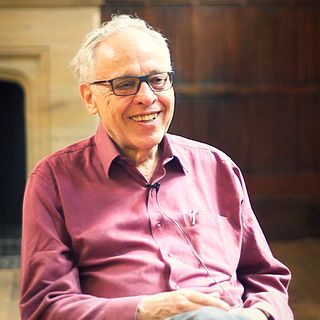
Joseph Ivor Silk FRS is a British-American astrophysicist. He was the Savilian Chair of Astronomy at the University of Oxford from 1999 to September 2011.

The Canadian Institute for Theoretical Astrophysics (CITA) is a national research institute funded by the Natural Sciences and Engineering Research Council, located at the University of Toronto in Toronto, Ontario, Canada. CITA's mission is "to foster interaction within the Canadian theoretical Astrophysics community and to serve as an international center of excellence for theoretical studies in astrophysics." CITA was incorporated in 1984.
The Gruber Prize in Cosmology, established in 2000, is one of three prestigious international awards worth US$500,000 awarded by the Gruber Foundation, a non-profit organization based at Yale University in New Haven, Connecticut.

Kenneth Charles Freeman is an Australian astronomer and astrophysicist who is currently Duffield Professor of Astronomy in the Research School of Astronomy and Astrophysics at the Mount Stromlo Observatory of the Australian National University in Canberra. He was born in Perth, Western Australia in 1940, studied mathematics and physics at the University of Western Australia, and graduated with first class honours in applied mathematics in 1962. He then went to Cambridge University for postgraduate work in theoretical astrophysics with Leon Mestel and Donald Lynden-Bell, and completed his doctorate in 1965. Following a postdoctoral appointment at the University of Texas with Gérard de Vaucouleurs, and a research fellowship at Trinity College, Cambridge, he returned to Australia in 1967 as a Queen Elizabeth Fellow at Mount Stromlo. Apart from a year in the Kapteyn Institute in Groningen in 1976 and some occasional absences overseas, he has been at Mount Stromlo ever since.
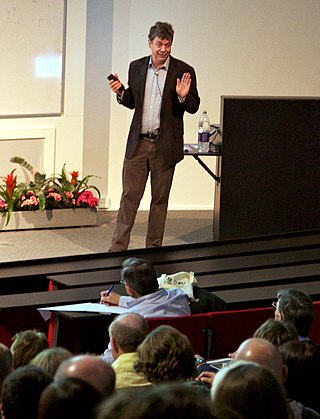
Simon David Manton White, FRS, is a British-German astrophysicist. He was one of directors at the Max Planck Institute for Astrophysics before his retirement in late 2019.

The University of Toronto Department of Mathematics is an academic department within the Faculty of Arts and Science at the University of Toronto. It is located at the university's main campus at the Bahen Centre for Information Technology.
Matias Zaldarriaga is a theoretical physicist best known for his work on cosmology. He has made significant contributions toward understanding both astrophysical phenomena and fundamental physics, most notably through his research on modeling the early universe and analyzing statistical properties of cosmic microwave background data. Zaldarriaga grew up in Buenos Aires, Argentina and received his undergraduate degree from the University of Buenos Aires in 1994. He received his PhD in 1998 from the Massachusetts Institute of Technology, followed by a postdoctoral fellowship at the Institute for Advanced Study in Princeton, NJ. Zaldarriaga was a faculty member at New York University and Harvard University, where he received a MacArthur Fellowship in 2006. He is currently a professor at the Institute for Advanced Study, where he has been a faculty member since 2009.
George Petros Efstathiou is a British astrophysicist who is Professor of Astrophysics (1909) at the University of Cambridge and was the first Director of the Kavli Institute for Cosmology at the University of Cambridge from 2008 to 2016. He was previously Savilian Professor of Astronomy at the University of Oxford.
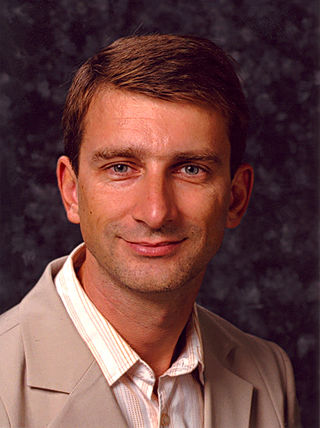
Uroš Seljak is a Slovenian cosmologist and a professor of astronomy and physics at University of California, Berkeley. He is particularly well-known for his research in cosmology and approximate Bayesian statistical methods.

Wendy Laurel Freedman is a Canadian-American astronomer, best known for her measurement of the Hubble constant, and as director of the Carnegie Observatories in Pasadena, California, and Las Campanas, Chile. She is now the John & Marion Sullivan University Professor of Astronomy and Astrophysics at the University of Chicago. Her principal research interests are in observational cosmology, focusing on measuring both the current and past expansion rates of the universe, and on characterizing the nature of dark energy.
Calvin Barth Netterfield, known as Barth Netterfield, is a Canadian astrophysicist, and a Professor in the Department of Astronomy and the Department of Physics at the University of Toronto. He is a leading expert in the development of balloon-borne telescopes. These are astrophysical experiments that are lifted into the stratosphere by high-altitude balloons where they conduct observations that would be hindered by atmospheric interference if done on the ground. Netterfield is primarily known for his work in observational cosmology, specifically in developing instrumentation to observe the cosmic microwave background (CMB) radiation. Most notably, he was a key member of the instrument team for BOOMERANG, the experiment that made one of the first accurate determinations of the age, geometry, and mass-energy content of the universe. More recently, he has delved into the field of submillimetre astronomy and the physics of star formation, through his involvement with the BLAST telescope. Netterfield was featured prominently in BLAST!, a documentary film about the 2005 and 2006 flights of BLAST from Sweden and Antarctica.
Marc Kamionkowski is an American theoretical physicist and currently the William R. Kenan, Jr. Professor of Physics and Astronomy at Johns Hopkins University. His research interests include particle physics, dark matter, inflation, the cosmic microwave background and gravitational waves.
The CAP-CRM Prize in Theoretical and Mathematical Physics is an annual prize awarded by the Canadian Association of Physicists (CAP) and Centre de Recherches Mathématiques (CRM) to recognize research excellence in the fields of theoretical and mathematical physics. The award winner's research should have been performed in Canada or in affiliation with a Canadian organization.
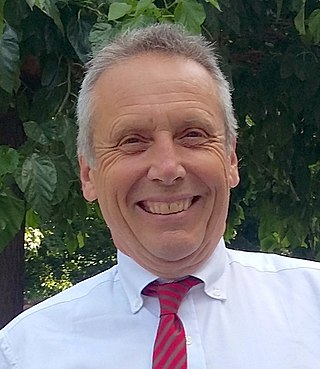
Nicholas Kaiser was a British cosmologist.
Ue-Li Pen is a Canadian astrophysicist, cosmologist, and computational physicist.

Hiranya Vajramani Peiris is a British astrophysicist at the University of Cambridge, where she holds the Professorship of Astrophysics (1909). She is best known for her work on the cosmic microwave background radiation, and interdisciplinary links between cosmology and high-energy physics. She was one of 27 scientists who received the Breakthrough Prize in Fundamental Physics in 2018 for their "detailed maps of the early universe."
Christopher Thompson is a Canadian astronomer and astrophysicist. He is a professor of astronomy at the University of Toronto Canadian Institute for Theoretical Astrophysics (CITA).
Yanqin Wu is a theoretical astrophysicist whose research concerns planet formation, protoplanetary disks, the effects on planets of photoevaporation, orbital resonance, and planetary migration, and the classification and distribution of exoplanets. She has theorized that planetary collisions have culled initially-crowded systems until what remains is often on the edge of chaos, and used oscillations in the rings of Saturn to study the past history of the Solar System. Educated in China and the US, she has worked in England and Canada, where she is a professor in the Department of Astronomy & Astrophysics of the University of Toronto.











